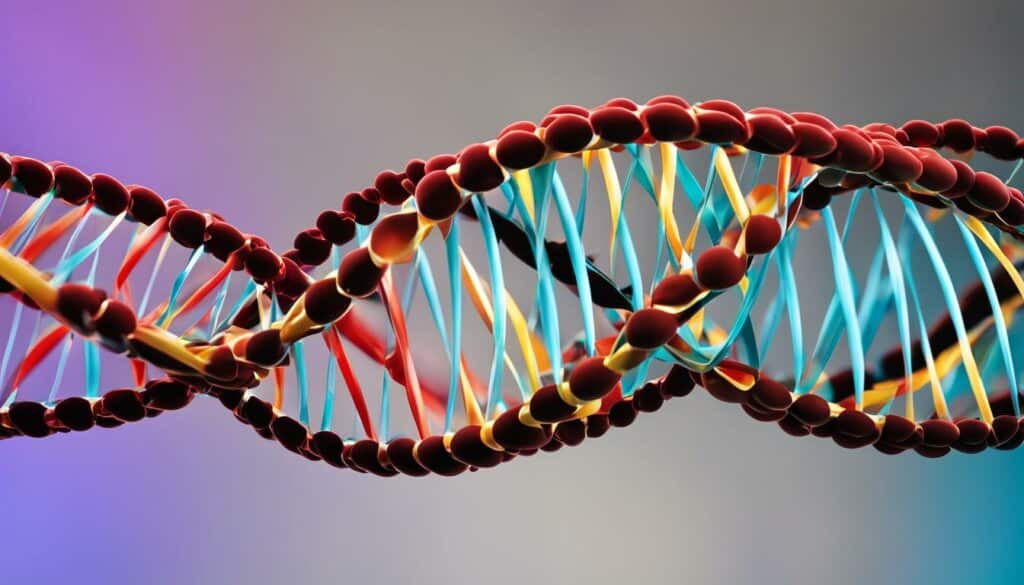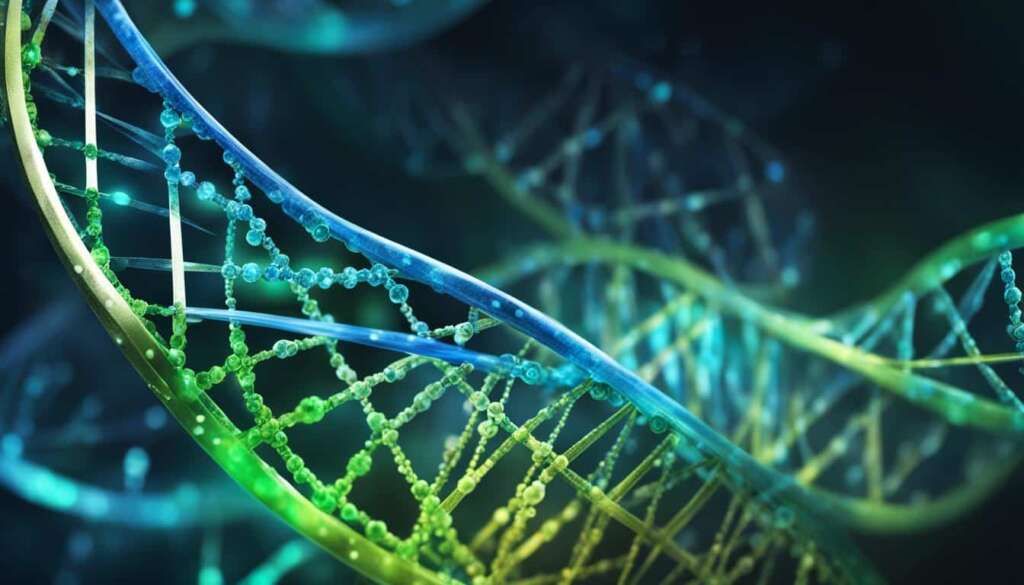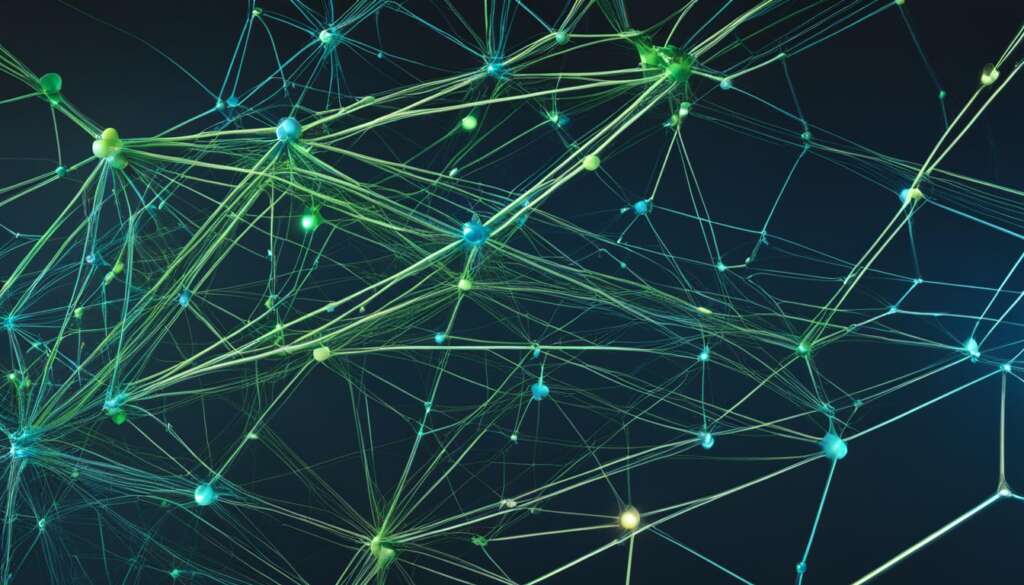Table of Contents
DNA computing is a groundbreaking field that combines biology and computer science to revolutionize the way we approach computing and solve complex problems. With its immense storage capacity and parallel processing capabilities, DNA computing has the potential to transform industries like healthcare, finance, and cryptography.
As we delve into the world of DNA computing, we discover its immense potential in storing vast amounts of data in a minuscule gram of DNA and performing multiple computational tasks simultaneously, offering faster and more efficient data processing.
In the healthcare sector, DNA computing can analyze genomic data for disease diagnosis and personalized treatment plans. In finance, it can enhance data security, as well as enable faster financial modeling and risk analysis. Additionally, researchers are exploring the potential of DNA-based encryption systems in cryptography.
While DNA computing faces challenges such as high cost and complexity in DNA synthesis and sequencing, advancements in technology are expected to overcome these obstacles in the future. The potential of DNA computing is immense, and it promises to unlock a future full of innovative applications and advancements.
The Colossal Storage Capacity of DNA Computing
DNA computing holds the key to a groundbreaking solution for data storage and access. With its exceptional storage capacity, even a minuscule gram of DNA has the potential to store a staggering 215 petabytes of data. This capacity is equivalent to the entire volume of human-generated data. Such a breakthrough in storage capability opens up a world of possibilities across multiple industries, including healthcare, finance, and cryptography.
In the healthcare sector, DNA computing can play a vital role in storing and analyzing genomic data. The storage capabilities of DNA computing allow for efficient and secure storage of vast amounts of data related to an individual’s genetic makeup. This data can be utilized for disease diagnosis and personalized treatment plans, leading to improved healthcare outcomes.
In the finance industry, DNA computing can offer heightened data security and protection. Critical financial data, such as transaction records and sensitive customer information, can be securely stored using DNA-based computing systems. DNA’s inherent self-replicating nature and immense storage capacity make it an ideal choice for creating unbreakable encryption algorithms in cryptography.
The storage potential of DNA computing extends far beyond its compact size. It offers durability and longevity, making it an attractive option for long-term data storage solutions. Unlike traditional methods that rely on physical storage devices, DNA computing provides a reliable and robust approach to storing data.
To visualize the colossal storage capacity of DNA computing, consider the following comparison:
| Data Storage Medium | Storage Capacity |
|---|---|
| DNA Computing | 215 petabytes |
| Traditional Hard Drive | 1 terabyte |
| Blu-ray Disc | 25 gigabytes |
| USB Flash Drive | 512 gigabytes |
As the table demonstrates, DNA computing surpasses traditional data storage mediums by a colossal margin. This exponential increase in storage capacity propels the potential applications of DNA computing to new heights.
Next, we’ll explore the power of parallel processing in DNA computing, highlighting its impact on data processing and analysis.
The Power of Parallel Processing in DNA Computing
One of the most significant advantages of DNA computing is its ability to perform parallel processing, allowing for quicker and more efficient data processing. DNA molecules can simultaneously perform numerous computational tasks, offering high-speed processing capabilities. This feature is particularly beneficial in industries that require fast and accurate data processing, such as healthcare.
DNA computing can assist in analyzing vast amounts of genomic data and providing valuable insights for disease diagnosis and treatment. By leveraging the parallel processing capabilities of DNA computing, researchers can develop advanced algorithms and models for various applications, leading to faster research and development.
With the power of parallel processing, DNA computing technology opens up new possibilities in solving complex problems and advancing technology. It enables researchers to process and analyze large data sets in a fraction of the time compared to traditional computing methods. This acceleration in data processing can lead to important breakthroughs in fields such as genomics, where the analysis of massive datasets is crucial for understanding genetic diseases and developing personalized treatments. The advantages of DNA computing in parallel processing are evident in its potential to revolutionize industries and drive innovation.

Furthermore, the ability to perform parallel processing using DNA algorithms presents significant advantages over conventional computing methods. DNA computing can handle multiple tasks simultaneously, enabling efficient and rapid computational processes. By harnessing the power of DNA parallel processing, researchers and scientists are able to tackle complex problems with greater speed and precision, ultimately leading to groundbreaking discoveries and advancements in various scientific disciplines.
Example Applications of DNA Parallel Processing Algorithm
| Industry | Potential Applications |
|---|---|
| Healthcare | Accelerated analysis of genomic data for disease diagnosis and personalized treatment plans |
| Finance | Faster financial modeling and risk analysis |
| Cryptography | Development of DNA-based encryption systems for enhanced data security |
| Artificial Intelligence | Efficient processing of large datasets for training and optimizing machine learning models |
In each of these industries and beyond, the power of DNA parallel processing algorithms brings new opportunities for advancements and innovation. The ability to process large volumes of data rapidly opens up possibilities for solving complex problems, optimizing processes, and pushing the boundaries of what is currently achievable.
The advantages of parallel processing in DNA computing make it a promising technology for various industries and research fields. As technology continues to evolve and improve, the potential applications of DNA computing’s parallel processing capabilities are vast and can have a transformative impact on the way we approach computing and problem-solving.
Overcoming Challenges in DNA Computing
While DNA computing holds immense potential, there are challenges that need to be addressed for its widespread adoption. The high cost and complexity of DNA synthesis and sequencing present significant obstacles to accessibility. Synthesising and sequencing DNA is currently a costly and time-consuming process, limiting the practical application of DNA computing. However, advancements in technology and decreasing costs are expected to overcome these challenges in the future. Ongoing research in DNA computing technology aims to improve efficiency and affordability, paving the way for innovative applications in various industries. Overcoming these challenges will unlock the full potential of DNA computing and revolutionize technology and problem-solving approaches.
The rapid advancement of DNA computing technology has the potential to transform industries, revolutionizing the way we approach computing and data processing. However, there are certain challenges that need to be overcome to fully harness the power of DNA computing.
The high cost and complexity of DNA synthesis and sequencing:
Synthesising and sequencing DNA is currently a costly and time-consuming process. The complex nature of DNA structures and the precision required for synthesis and sequencing contribute to the high costs involved. This hindered accessibility limits the practical application of DNA computing technology in various fields.
Advancements in technology and decreasing costs:
Despite the challenges, continuous advancements in technology and the decreasing costs associated with DNA synthesis and sequencing offer promising solutions. As technology progresses, we can expect improvements in efficiency and affordability, making DNA computing more accessible to a wider range of industries and applications.
Ongoing research in DNA computing technology:
DNA computing researchers are committed to addressing the challenges and improving the overall efficiency and effectiveness of DNA computing systems. Ongoing research focuses on developing streamlined processes, more cost-effective methods, and further enhancing the capabilities of DNA computing technology.
Paving the way for innovative applications:
By overcoming the challenges of cost and complexity, DNA computing has the potential to revolutionize technology and problem-solving approaches across various industries. The ability to store vast amounts of data in a minuscule gram of DNA and perform multiple computational tasks simultaneously opens up new possibilities in fields such as healthcare, finance, and cryptography.
In summary, while there are hurdles to overcome in the widespread adoption of DNA computing, the ongoing research and technological advancements in DNA computing systems are promising. As costs decrease and the complexity of DNA synthesis and sequencing becomes more manageable, the potential of DNA computing to revolutionize technology and problem-solving approaches will become increasingly attainable.
Conclusion
DNA computing technology is poised to revolutionize the future with its immense potential for innovative applications and advancements. With its massive storage capacity and parallel processing capabilities, DNA computing offers a promising solution for data storage, processing, and analysis. The healthcare sector can leverage DNA computing to unlock the power of genomic data for precise disease diagnosis and personalized treatment plans. In the world of finance, DNA computing can enhance data security and facilitate faster financial modeling and risk analysis. The potential of DNA-based encryption systems also provides heightened security for safeguarding sensitive information.
While challenges such as high costs and complexity exist in DNA computing, ongoing research and technological advancements are paving the way for more accessible and affordable applications. Researchers are committed to improving the efficiency and affordability of DNA synthesis and sequencing, making this groundbreaking technology more practical for widespread adoption. As we continue to explore the possibilities of DNA computing, the future holds immense potential for transformative breakthroughs in technology and problem-solving.
In summary, DNA computing technology has the power to revolutionize various industries and redefine the way we approach computational challenges. Its enormous storage capacity, parallel processing capabilities, and potential for enhanced data security make it a compelling choice for solving complex problems. With ongoing research and advancements in technology, the exciting possibilities of DNA computing applications are within reach. The future of DNA computing is bright, promising, and full of opportunities for innovation and progress.
FAQ
What is DNA computing?
DNA computing is a field that combines biology and computer science to revolutionize the way we approach computing and solve complex problems.
What are the applications of DNA computing?
DNA computing has applications in healthcare, finance, and cryptography. It can be used for disease diagnosis and personalized treatment plans in healthcare, enhance data security in finance, and create unbreakable encryption algorithms in cryptography.
What are the advantages of DNA computing?
DNA computing offers a colossal storage capacity and the ability to perform parallel processing, enabling faster and more efficient data processing.
What are the challenges in DNA computing?
The high cost and complexity of DNA synthesis and sequencing are challenges in DNA computing. However, advancements in technology are expected to overcome these obstacles in the future.
What is the future of DNA computing?
The future of DNA computing holds immense potential for innovative applications and advancements in technology. Ongoing research and advancements aim to increase accessibility and affordability, unlocking the full potential of DNA computing.













